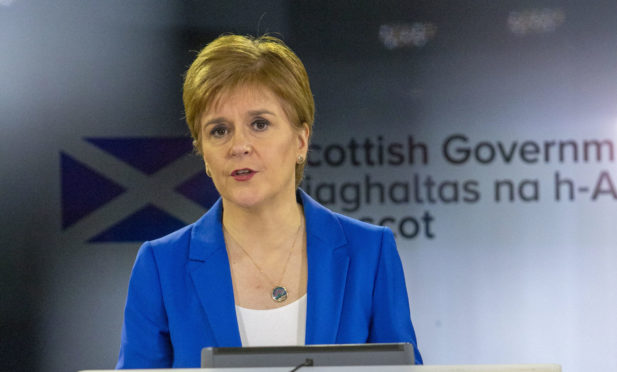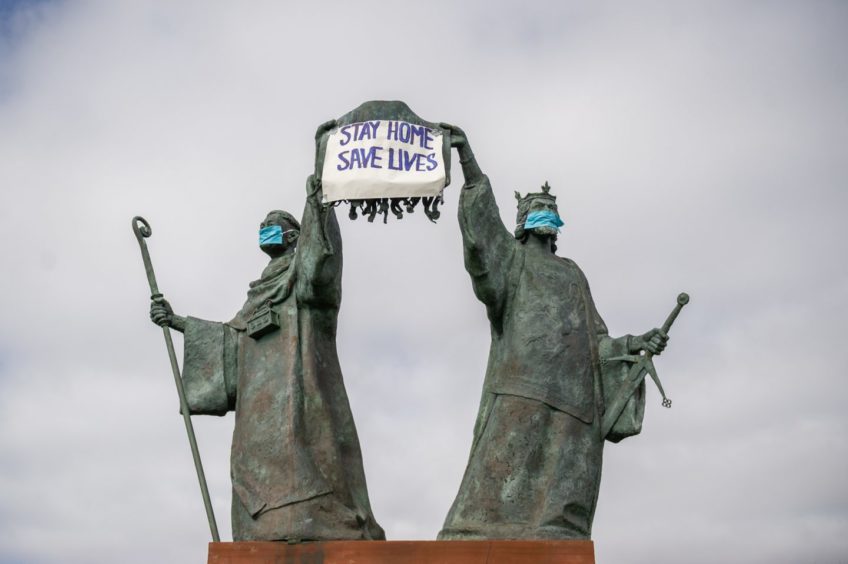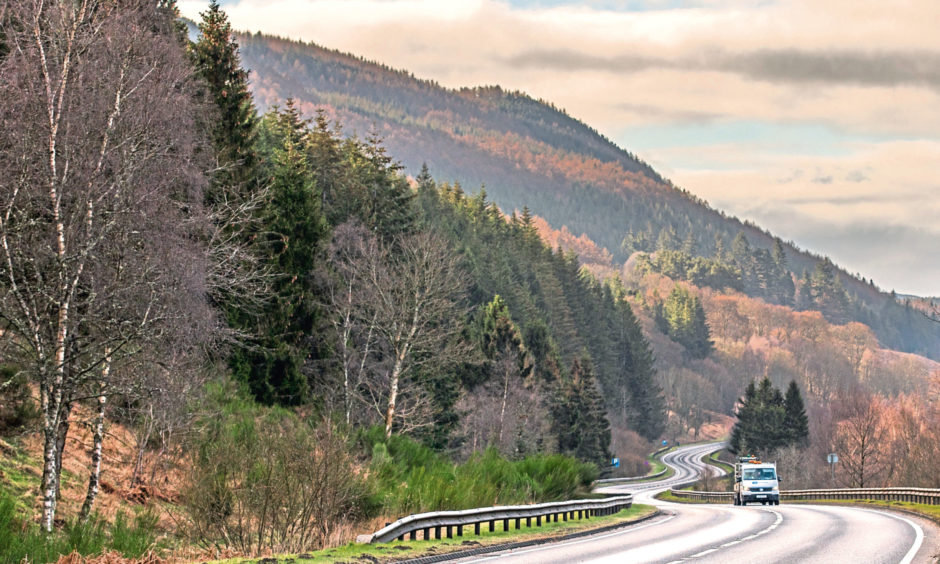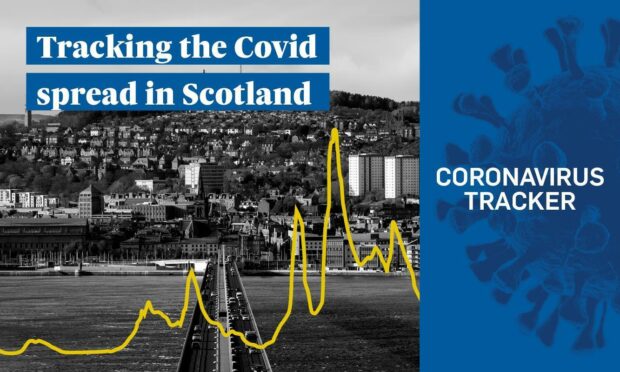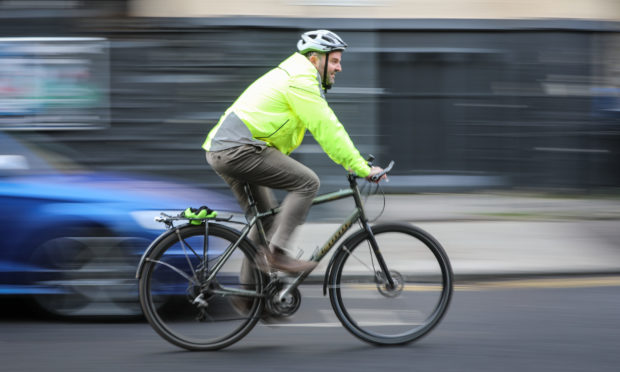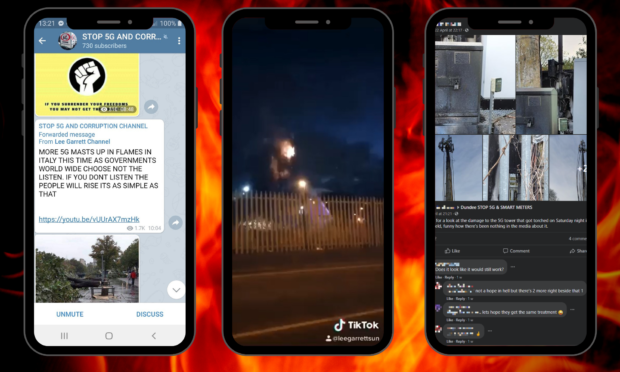Allowing some children back to school and giving people more time outdoors are among the measures the Scottish Government is considering to ease lockdown restrictions when the time is right.
First Minister Nicola Sturgeon outlined five “initial options” for easing strict rules in place to stop the spread of Covid-19 across the country – but warned these changes could not be implemented yet.
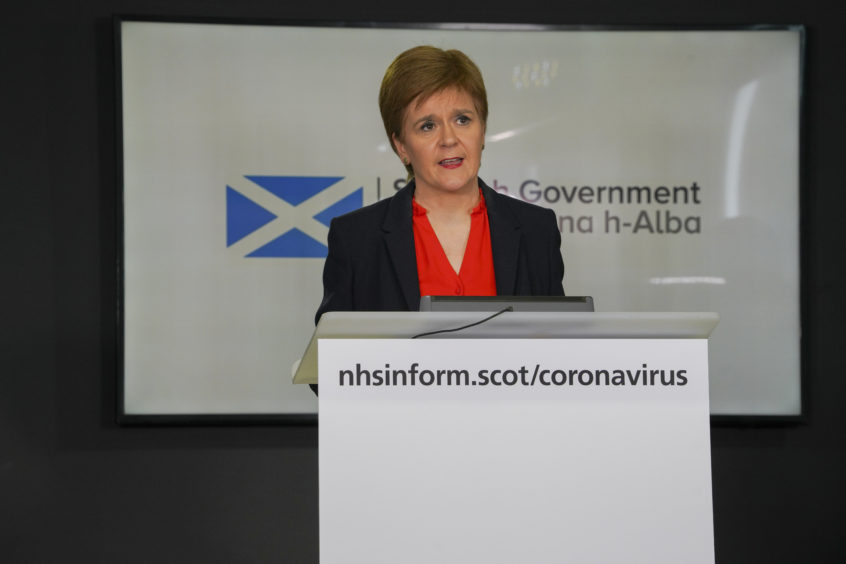
She said consideration is being given to changing restrictions on people leaving their homes, to allow exercise more than once a day.
She also said there could be a relaxation to allow “meeting up with small defined groups” of other people – potentially outdoors at first – in a “sort of bubble” arrangement.
Ms Sturgeon was speaking at a press conference in Edinburgh as the Scottish Government published a paper which outlined the restrictions that could be lifted “when it is safe to do so”.
The First Minister said strict lockdown measures currently in place across the country will remain until at least May 28 – unless evidence and data suggests otherwise.
With the current restrictions due to be reviewed on Thursday, Ms Sturgeon said it was “highly unlikely” any significant changes would be made at this time.
However, the framework details how the country could establish a “new normal”.
The construction, retail, manufacturing and rural work sectors are among the businesses which could be looked at first when closures are reviewed in an attempt to reignite the economy.
The framework sets out “the steps that might form part of the initial changes to the current lockdown restrictions”.
Lockdown Life: How the pandemic has changed the streets of Dundee
It also establishes that “no significant change will be possible” from May 7 – which is the end of the current three-week review period on lockdown restrictions.
It adds: “To be clear, we are not recommending these options at the moment but offer them as examples of what may come next and the kind of preparations that are underway.”
Ms Sturgeon said the document will ensure the country is “ready to make changes when the evidence says it is safe to do so”.
Sturgeon’s statement
Ms Sturgeon said: “As I said yesterday, by Thursday this week we have to formally assess whether any lockdown restrictions should be lifted at this stage. The other UK governments will also be making an assessment on or around that date.
“As we move forward we will continue to discuss, and where appropriate make decisions on a four nations basis. It remains my intention to have UK-wide alignment where the evidence supports it, though obviously my over-arching responsibility is to reach evidence-based decisions that are right for Scotland.
“I think it is highly unlikely that the Scottish Government will be able to make any significant changes to the current arrangements on Thursday. I think it is important I am frank with you about that now.
“Today’s paper sets out in detail the data that underpins that conclusion.
“In short we are seeing progress, real progress, particularly in the number of people admitted to intensive care, but that progress is still fragile.
“That means any increase in the physical interactions we have with other people could quickly see transmission of the virus increase again.
“We estimate that there are currently around 26,000 people with Covid-19 in Scotland. I stress these are estimates, but that is still too high a number for us to consider that the virus is under control.
“I have also spoken before about the vital importance, the critical importance, of keeping the ‘R’ number under one.”
It comes as Ms Sturgeon said there were potentially 26,000 people in Scotland with Covid-19.
She said the “best estimate” was that the R number – the number of people infected by each person who has the virus – was that this was between 0.7 and one.
But she stressed: “We can’t be sure it is not closer to one than 0.7.”
The First Minister said charts based on data from Denmark show if Scotland was to fully reopen nurseries and primary schools now “the most likely scenario would be a resurgence in the virus which would overwhelm our hospital capacity in a matter of weeks”.
Ms Sturgeon said: “The hard fact is we must see further restrictions in new cases, hospital and ICU admissions and deaths to be sure the overall level of infection and the R number are lower than they are now.
“That means for the moment we do need to stick with the current lockdown restrictions.”
Ms Sturgeon said: “The fact is that any easing of restrictions, whenever we introduce them, will have an impact on the R number.
“But if we get our baseline lower than it is now we will have more headroom to cope with that and be able to avoid outcomes like the one I just highlighted.”
Lockdown Life: How the pandemic has changed the streets of Arbroath
She added: “For the moment we do need to stick with the current lockdown restrictions. However I am acutely aware that the severity of restrictions we are living under now cannot continue indefinitely.
“We know that lockdown is doing its own damage. So we also need to be preparing to make changes as soon as it is safe to do so. The next three-week period of lockdown is due to end on May 28.
“That does not necessarily mean we can’t make any changes before then if the evidence suggests it is safe to do so – if we can we will.
“For example, I’m particularly keen as soon as possible – for mental health and well-being – to allow people to be outdoors more. And obviously we are all keen to get the economy moving again as soon as we can.”
Five options for easing lockdown
Ms Sturgeon added: “So today’s paper sets out some options that we are working on both in terms of assessing their impact and the practicalities of implementation so that we will be ready to make changes when the evidence tells us it is safe to do so.
“To be clear with you this is not a list of things we will definitely do by certain dates. Indeed we might not be able to take all of these steps even at the end of May.
“This is going to be a long process with different phases along the way and we will only implement these changes when it is as safe as possible to do so.
“In the meantime it is vital that we stick rigorously to the current rules. It is important that we are preparing now.
“So I want to briefly set out the options we are working on. “
The outdoors
“We are considering firstly if and how we could change our advice on spending time outdoors to allow exercise outside to happen more than once a day – so long as we can stay apart from people outside our own households.”
Meetings of “small, defined groups”
“Second we are also considering if a slight relaxation on the rules to allow meeting up with a small, defined group of people from other households in a sort of bubble might be possible, even if initially that was only possible out of door and not indoors.
“This is of course in which we could start to interact with family and friends which I know is so important to all of us.
“However we also have to consider carefully the impact on the spread of the virus and we have to think through how such an approach can be implemented in practice, and also how the limitations of it could be enforced if necessary.
“It is also not something that would be possible for those that are currently shielding so we have to think also about the fairness of it.”
NHS and community care services re-started
“The third area we are looking at is when and in what order can resume NHS and community care services.
“As you know we stopped some service – for example screening programmes and non-urgent, elective procedures – to ensure the NHS could cope with the virus. But these postponements also have implications for health so we must consider how services can be restarted as soon as possible.”
Business reopenings
“The fourth area relates to how we carefully, gradually and safely allow businesses to reopen. That is a major area of work for obvious reasons.
“We need to work with business and with trade unions to consider the practical arrangements for different work environments to start up safely.
That is: changes to working practices, physical layouts of work places, the appropriate use of PPE and the operation of public transport.
“On this we are looking carefully at the work the UK Government is using and consulting our own stakeholders on that.
“Initially we are giving particular consideration to businesses in the constructions, retail and manufacturing sectors, and also to some outdoor and rural businesses.
“However where homeworking is possible we are very likely to insist on that for the foreseeable future. I want to be very clear as of now, current advice to business remains in place.”
Schools
“Finally I said before one of the hardest decisions I’ve ever taken was the closure of schools. I know the impact this is having on young people.
“It also has a big impact on family routine. The deputy First Minister is chairing the Education Recovery Group, which is considering options for how pupils might gradually return to school.
“Now, again I need to be clear, a return to school might not be possible this side of the summer holidays but we are considering whether some groups of students such as vulnerable children, children who are making the transition from primary to secondary school, or are studying for national qualifications could return to school ahead of others.
“And any initial return to school, when it does happen, is of course likely to require a mixture of time at school and learning at home.
“For example, it is possible that different groups could attend school part time in blocks of a few days or a week at a time to enable physical distancing and deep-cleaning of schools between sessions.
“In all of this we are trying to find the right balance between children’s educational and wider needs and public health imperatives.
“I want to be crystal clear while we will of course take the greatest care in all of this, that that is particularly the case with schools. We will not compromise the safety of our children.”
